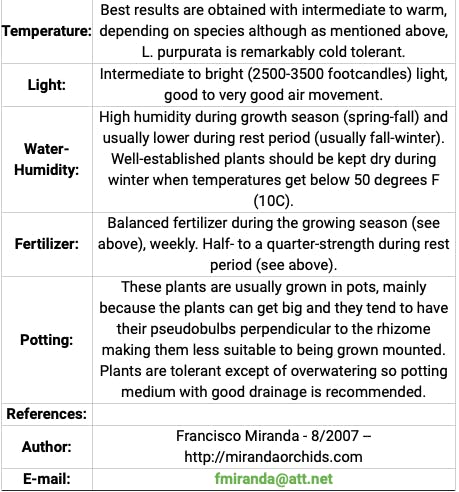Pronunciation:
cat-le-YO-dees
Tribe: Epidendreae
Subtribe: Laeliinae
Section Cattleyodes includes the largest flowered Brazilian species of the genus. Actually, the largest ones, period, as Laelia purpurata is reported to have flowers as large as 25 cm. (10") wide, but this is certainly atypical. Flower size varies usually from 1 ½" on Laelia virens to 8" in L. tenebrosa and L. purpurata, with the other species in-between. Laelia purpurata is probably the species with the widest color variation in the section, and basic color on segments varies from white to light pink-magenta. The variation includes stripes, veins and splashes on petals, but is most impressive on the lip, where veins can come in different tones of pink, purple, violet, blue-gray, brick red, etc. Several of the other species have flowers in magenta tones, but Laelia tenebrosa, L. grandis and L. xanthina are found in yellow to brown and L. virens is green.
In terms of distribution, the species are essentially coastal and only a few extend slightly (max 100 miles) into the interior, thus most of them are fairly low elevation plants. The exception is Laelia virens, which is usually found between 2,500 - 4,000 ft (more or less 800 to 1300 m.) and thus can be considered the coolest growing species in the group. While the majority are low elevation species, their distribution is more to the south of Brazil, making them very-well adapted to a wide range of temperatures. As an example, Laelia purpurata can withstand temperatures from 100 degrees F down to freezing if kept relatively dry.
Number of species:
9, color forms in the hundreds. Currently the World Monocot Checklist considers these species to belong to a greatly expanded genus Sophronitis however Genera Orchidacearum Vol. 5 will transfer the entire expanded Sophronitis to Cattleyaand the World Checklist will follow soon thereafter.
Distribution:
Tropical America, Brazil.
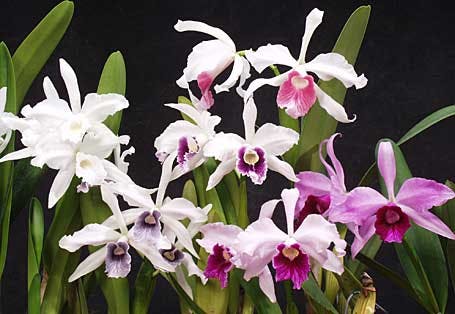
Some color forms of Laelia purpurata - ©2009 Greg Allikas

L. purpurata var. rosada 'KG's Purpurtrator'
AM/AOS - ©2009 Greg Allikas
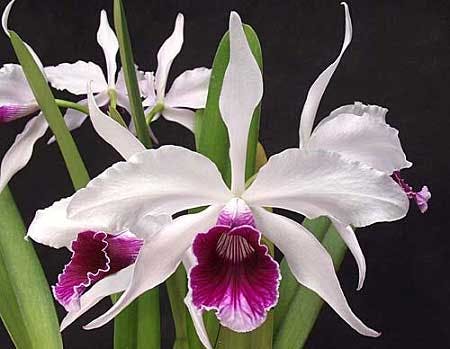
L. purpurata, typical form - ©2009 Greg Allikas
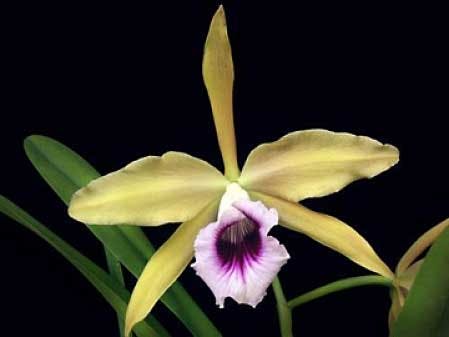
L. tenebrosa - ©2009 Greg Allikas
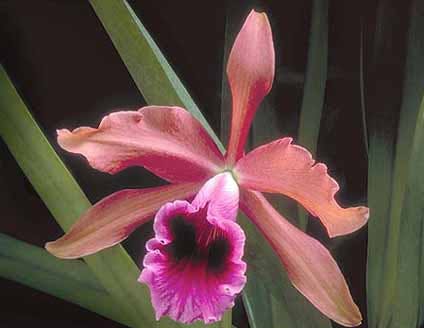
L. tenebrosa - ©2009 Greg Allikas
--- C U L T U R E ---
